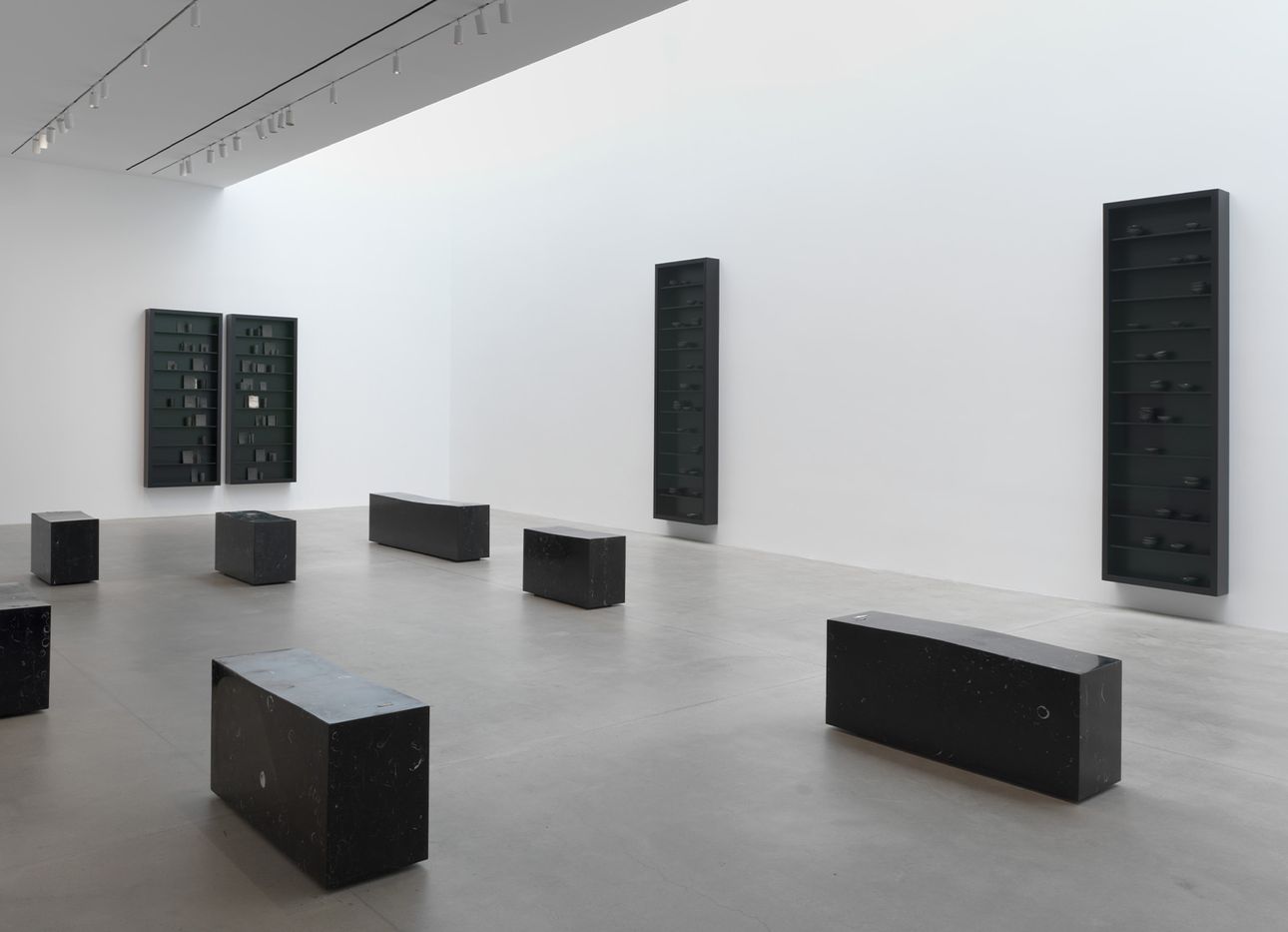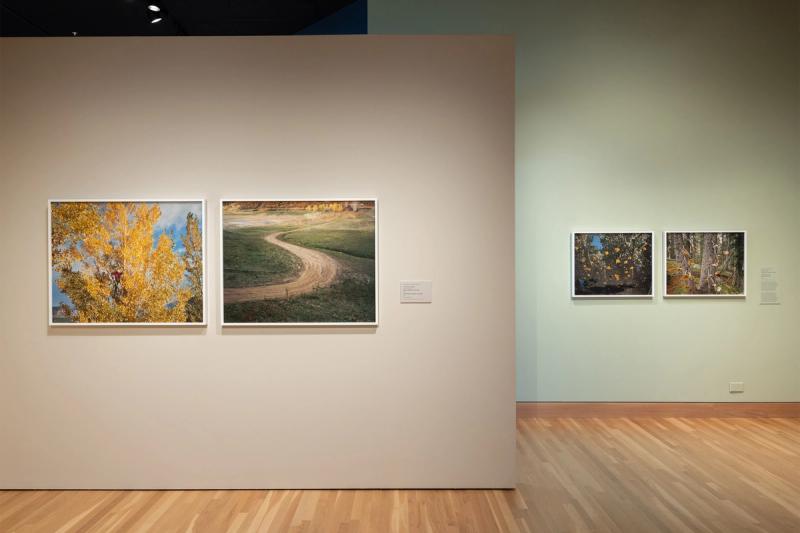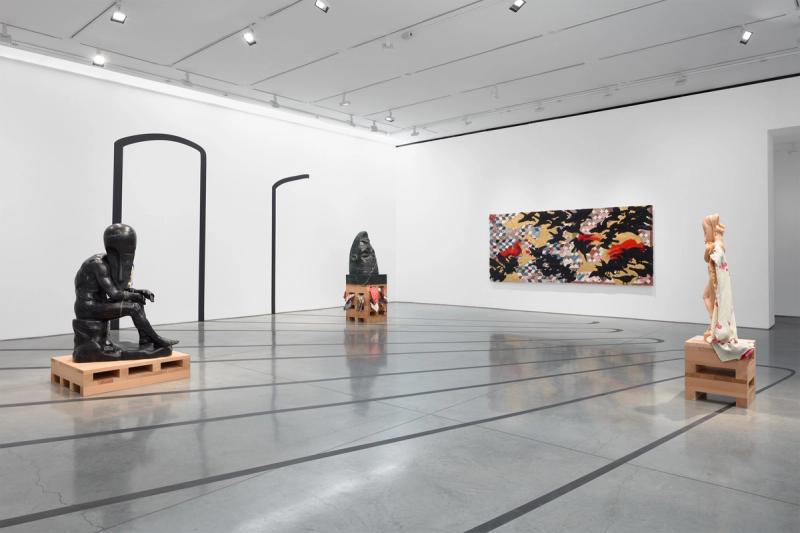
5 Exhibitions You Can’t Miss This Fall
Every year, the fall brings a global gauntlet of gallery openings, museum galas, and art fairs (Frieze London and Paris+ in October, Salon Art + Design in New York and Paris Photo in November, and the perennial year-end juggernaut Art Basel Miami Beach in December, to name a few). In an effort to cut through the noise—just as we did this past summer—we selected five must-see shows this season, from New York City, to Washington, D.C., to Denver. In New York, we recommend visiting Edmund de Waal’s ethereal and evocative “this must be the place” at Gagosian and Sanford Biggers’s spirited “Meet Me on the Equinox” at Marianne Boesky Gallery—only a few doors down from each other on West 24th Street in Chelsea—then taking a quick uptown subway ride to the Museum of Modern Art on 53rd Street to check out its groundbreaking “Emerging Ecologies” architecture exhibition. In D.C., we’re eagerly awaiting Simone Leigh’s takeover of the Hirshhorn (a touring retrospective that debuted at the Institute of Contemporary Art in Boston earlier this year), and at the Denver Art Museum, we suggest seeing a recently opened exhibition featuring photographs by Trent Davis Bailey (full disclosure, he’s Spencer’s identical twin brother—he recently conducted a “twinterview” with him about his life and work for Ep. 97 of Time Sensitive—so of course we’re a bit biased).

“Edmund de Waal: this must be the place”
Gagosian, 541 West 24th St., New York (through Oct. 28)
The English artist, master potter, and author Edmund de Waal (the guest on Ep. 96 of our Time Sensitive podcast, out next Wednesday) presented his first New York gallery show at Gagosian a decade ago, in the fall of 2013. This year, he returns with two exquisitely arranged Gagosian exhibitions—one, “this must be the place”, in Chelsea; the other, “to light, and then return” (also on through Oct. 28), pairing his work with the photographer Sally Mann’s, uptown. At “this must be the place,” poetic compositions of vessels in wall-mounted vitrines are displayed alongside a series of monolithic benches carved from Kilkenny marble. A profound, resounding sense of musicality rings in these galleries. There’s also something library-like about this quiet installation, which whispers to those who pay attention, “There’s much more here than meets the eye.” The show is deep and powerful and heartfelt. It is a beautiful reflection and refraction on time, memory, lightness and fragility, and the embeddedness in and of things. —Spencer Bailey

“Simone Leigh”
Hirshhorn Museum and Sculpture Garden, Washington, D.C. (Nov. 3, 2023–March 3, 2024)
Among the most resonant artists of her generation, the Chicago-born, New York–based artist Simone Leigh has, over the past two decades, established herself as an inextinguishable force and critical voice situating questions of Black femme subjectivity at the center of contemporary art discourse. At the 2022 Venice Biennale, Leigh made waves with her critically acclaimed presentation for the U.S. Pavilion, “Sovereignty,” a series of ceramics and bronzes that hybridized disparate histories and narratives, including those related to ritual performances of the Baga peoples in Guinea, early Black American material culture from the Edgefield District in South Carolina, and the landmark 1931 Paris Colonial Exposition. This fall, the first comprehensive survey of her work, the eponymous exhibition “Simone Leigh” (on from Nov. 3 through March 3, 2024) will open at the Hirshhorn. An assemblage of approximately two decades of work across ceramic, bronze, video, and installation, including pieces from “Sovereignty,” the show, accompanied by a major monograph, chronicles Leigh’s self-proclaimed “auto-ethnographic” journey into and around conceptions of race, beauty, and community in visual and material culture, all the while bringing together historical periods, geographies, and art-making traditions from across the African diaspora. “I am charting a history of change and adaptation,” the artist has said of her practice, “through objects and gesture and the unstoppable forward movement of Black women.” Seen together, this wide array of works offers visitors the chance to steep in the grandiosity not just of the works themselves, but also of the subversive ideas they invoke and the expansive histories they draw upon. —Emily Jiang

“Trent Davis Bailey: Personal Geographies”
Denver Art Museum, Colorado (through Feb. 11, 2024)
The first-ever solo museum exhibition of the Evergreen, Colorado–based artist and photographer (and my twin brother) Trent Davis Bailey, “Personal Geographies” features pictures taken in the region in and around Paonia, Colorado, located on the western slope of the Rocky Mountains, where Bailey used to visit as a child and to which he later returned, through art-making and curiosity, as an adult. The corresponding project, “The North Fork,” was also just released in book form—a publication that the writer Rebecca Solnit describes as “a book of yearning for what has been and might be, a book of looking at what it is to see what lies beyond, a book about the longing that is always present because so much else is not even amid beauty and abundance.” Thirty-two of these pictures shine brightly in the Denver Art Museum as visual explorations of family, personal history, time, memory, and the climates, geographies, and landscapes of the American West. —S.B.

“Sanford Biggers: Meet Me on the Equinox”
Marianne Boesky Gallery, 507 West 24th St., New York (through Oct. 14)
The artist Sanford Biggers (the guest on Ep. 66 of our At a Distance podcast and on Ep. 99 of Time Sensitive, out next month) has in recent years become one of the most vital American artists of our time, someone highly attuned to our critical sociocultural present, but also to the far-off past. An artist whose practice seeks to, as he has put it, “re-right” history, Biggers continually produces rich, nuanced works that are collectivist and polyvocal in spirit, and that transcend any one meaning. Often, he quite literally creates tapestries of thought, weaving together multiple voices and histories—and materials. Earlier this year, Biggers organized “re:mancipation,” a groundbreaking exhibition at the University of Wisconsin-Madison’s Chazen Museum of Art that interrogated a problematic Abraham Lincoln monument. With “Meet Me on the Equinox,” the Harlem-based artist brings together his “Chimera” sculptures and quilt-based “Codex” series (quilts have long served for him as a consistent—and, in his hands, profound—medium, motif, and metaphor), as well as a site-specific drawing that intervenes in the main gallery. Another exhibition by Biggers, “Back to the Stars,” is also currently on view (through Oct. 28) at Chicago’s Monique Meloche gallery. —S.B.

“Emerging Ecologies: Architecture and the Rise of Environmentalism”
The Museum of Modern Art, New York, (through Jan. 20, 2024)
The first major museum exhibition to examine the relationship between architecture and the environmental movement in the United States, “Emerging Ecologies” is a sweeping exploration into the way American architects responded to the rising environmental crisis in the 1960s and ’70s, when a rapid increase in pollution and unsustainable use of resources spurred widespread activism. Organized by Carson Chan, the inaugural Director of the Emilio Ambasz Institute for the Joint Study of the Built and Natural Environment and a Curator in the museum’s department of architecture and design, “Emerging Ecologies” brings together a wide breadth of work—from archival drawings and videos to architectural models—spanning six decades. Chronicling bold, pioneering, and often revolutionary projects of the time, the exhibition shines a particular light on architects who spearheaded this cause, including R. Buckminster Fuller, Beverly Willis, and Emilio Ambasz, and reveals the previously unrecognized environmental concerns in the work of innovators like Ant Farm and Charles and Ray Eames. Looking to the future, the show also engages contemporary thinkers to contextualize how the ideas behind the works on view can be employed today to work toward a more sustainable future, through architecture and beyond. —E.J.